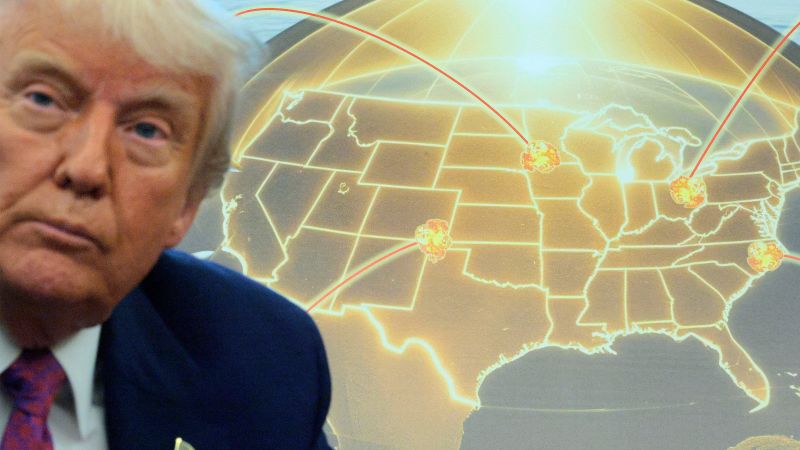In recent developments regarding national security, the Pentagon has announced a significant milestone in its efforts to bring the ambitious Golden Dome missile defense program to fruition. Scheduled for its inaugural major test in late 2028, this initiative aligns with President Donald Trump’s previous claims of accomplishing such a defense system within a three-year timeframe. The Golden Dome project intends to establish a space-based shield capable of intercepting missiles launched from any location in the world, thereby elevating the United States’ defense capabilities to an unprecedented level.
The urgency of this timeline is compounded by the political landscape, as the scheduled test coincides with the November 2028 elections. Such timing underscores a strategy by the Department of Defense (DoD) to showcase progress on the Golden Dome initiative, which could serve as a pivotal point of validation for military leaders influencing public perceptions and political support ahead of the elections. According to anonymous sources within the Pentagon, the military’s desire for a successful demonstration has created a pressure-cooker environment, compelling officials to act swiftly and avoid any potential roadblocks that might hinder development.
Key to these plans is the Missile Defense Agency (MDA), which will execute the forthcoming test referred to as FTI-X—Flight Test Integrated. This test will evaluate how various sensors and weapon systems of the Golden Dome interact cohesively to engage multiple targets effectively. There are significant challenges ahead; experts note that the journey toward establishing a functional space-based missile defense is fraught with technical obstacles. Over the years, the U.S. has continuously explored this concept, but achieving successful missile interception from space remains a complex and risky endeavor. The required satellite infrastructure to adequately cover the continental United States is immense, and the probability of successful engagements is contingent on many variables.
Space Force General Michael Guetlein has been designated by Trump to lead the Golden Dome initiative, making statements that highlight the project’s unprecedented complexity. He emphasized that while the technology for space-based interceptors exists, the real challenges lie in executing it economically and at scale. The ambition is to ramp up production quickly enough to construct a sufficient number of satellites to mitigate emerging threats, a task that is both daunting and critical to the program’s success.
Despite these aspirations, the Pentagon’s push to expedite the Golden Dome initiative raises concerns regarding oversight and accountability. Critics worry that, without proper scrutiny, substantial public funding might be wasted on a system that ultimately fails to meet its ambitious goals. The Defense Department has initiated planning that favors rapid development, raising alarms about potential gaps in oversight and the implications of excluding certain traditional Pentagon review processes.
The structure of the Golden Dome initiative has also been designed to provide Guetlein with unparalleled authority in awarding contracts and shaping technological acquisitions. With oversight minimized and justification for non-standard protocols included in a recently released memo by Secretary of Defense Pete Hegseth, the program is free from conventional regulatory scrutiny. This has led to apprehensions among defense officials regarding the absence of checks and balances, fostering an environment ripe for potential mismanagement or inefficiencies.
Amid these various factors, numerous companies are competing for contracts associated with the Golden Dome project. Prominent among the contenders are tech giants such as SpaceX, Anduril, and Palantir. These firms have pursued contracts with renewed vigor, keen to support the DoD, as they anticipate lucrative opportunities arising from the development of this highly complex missile defense system.
Overall, while the Golden Dome initiative represents a significant advancement in U.S. military strategy, its success is predicated on navigating the complex terrain of technological, logistical, and political challenges. As the 2028 test date approaches, the convergence of innovation, funding, and strategic execution will determine whether this ambitious project will elevate national security or falter under the weight of its aspirations.











